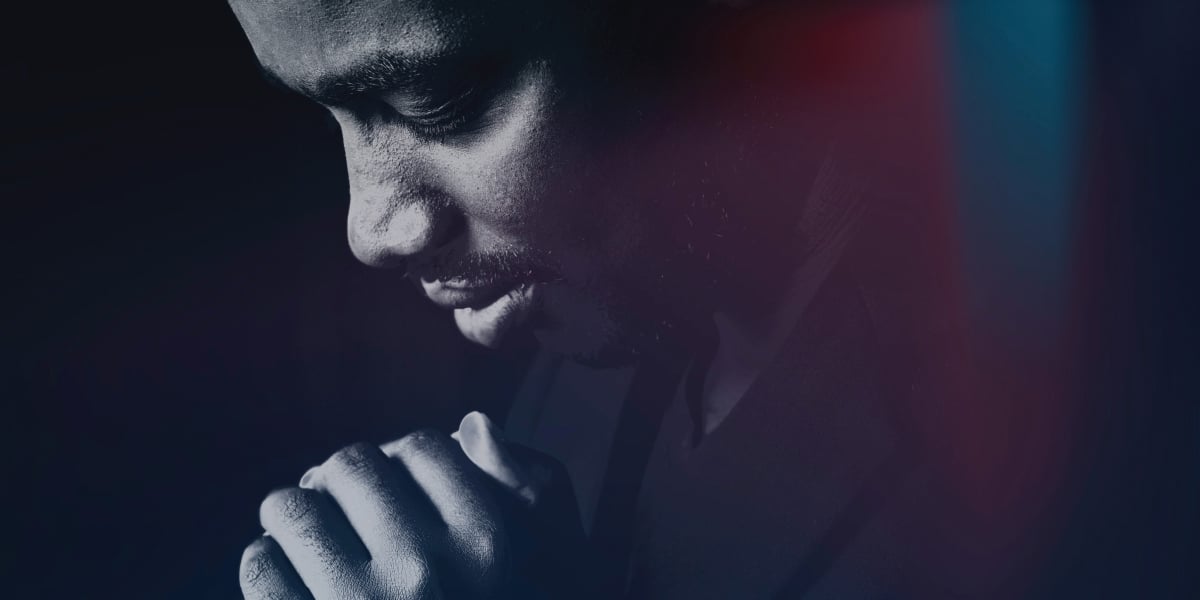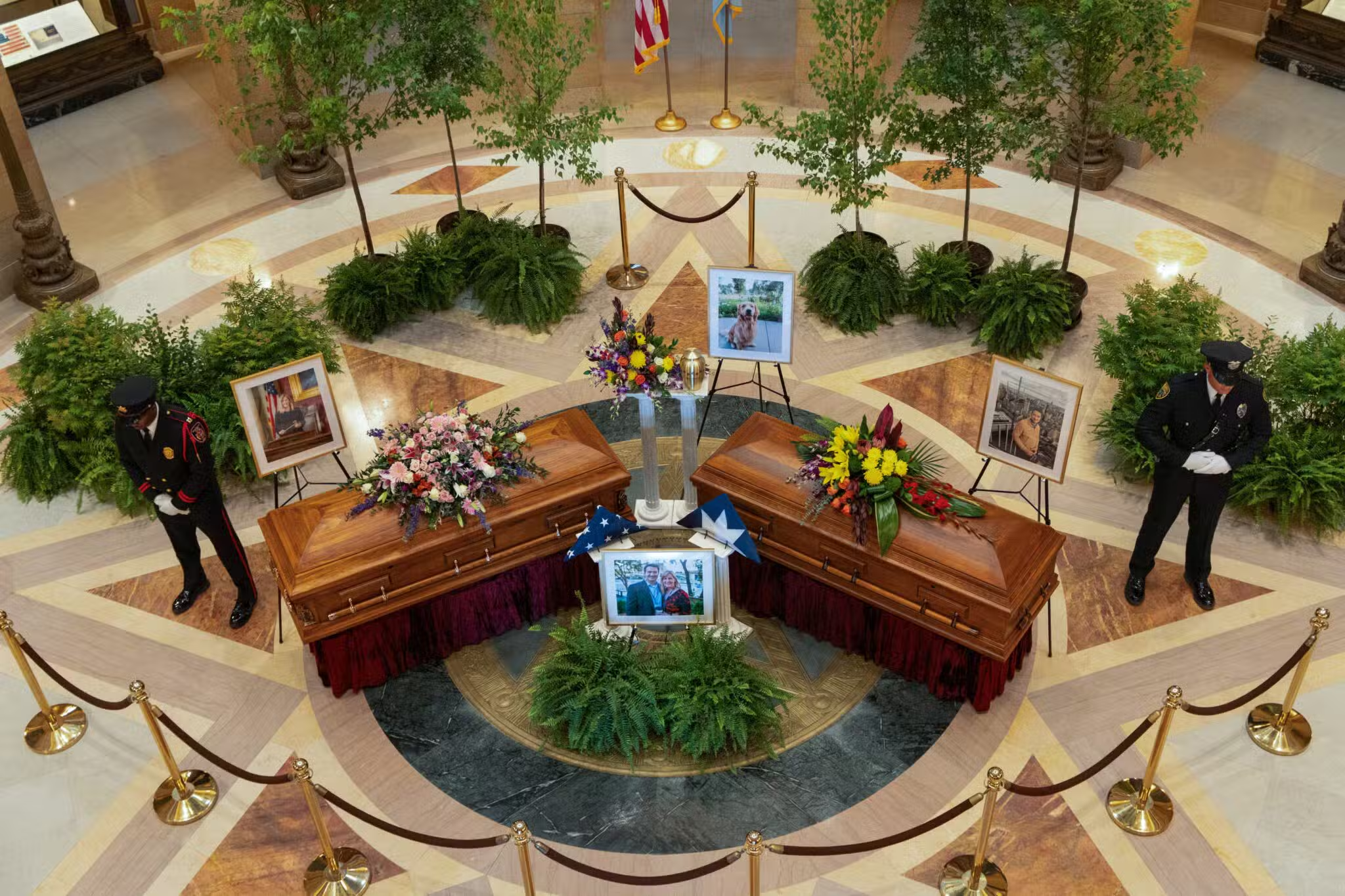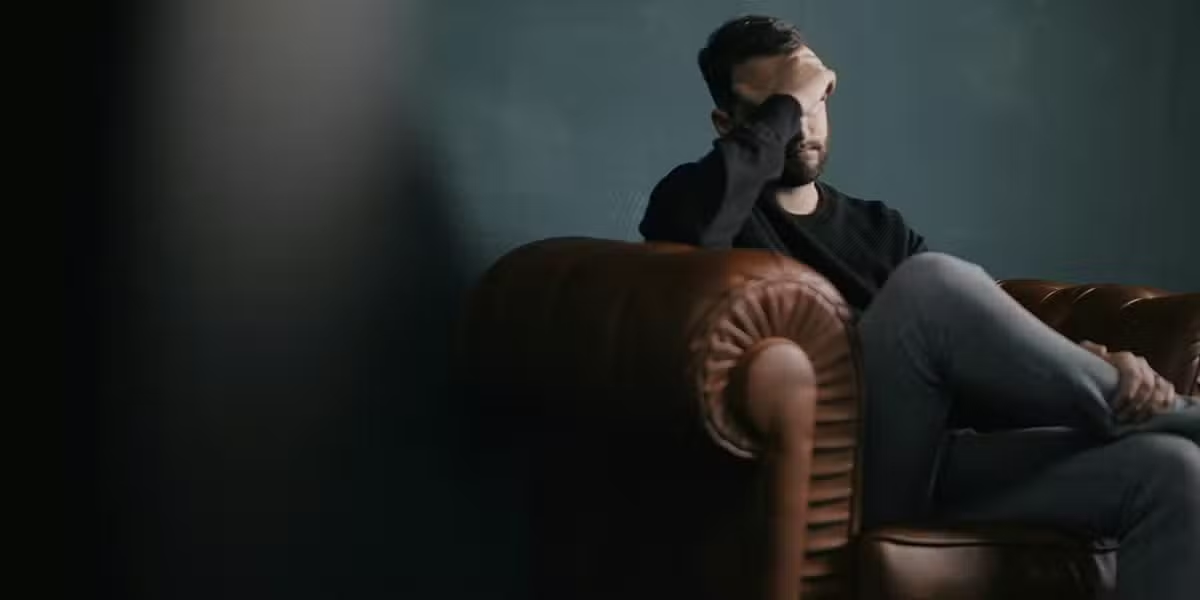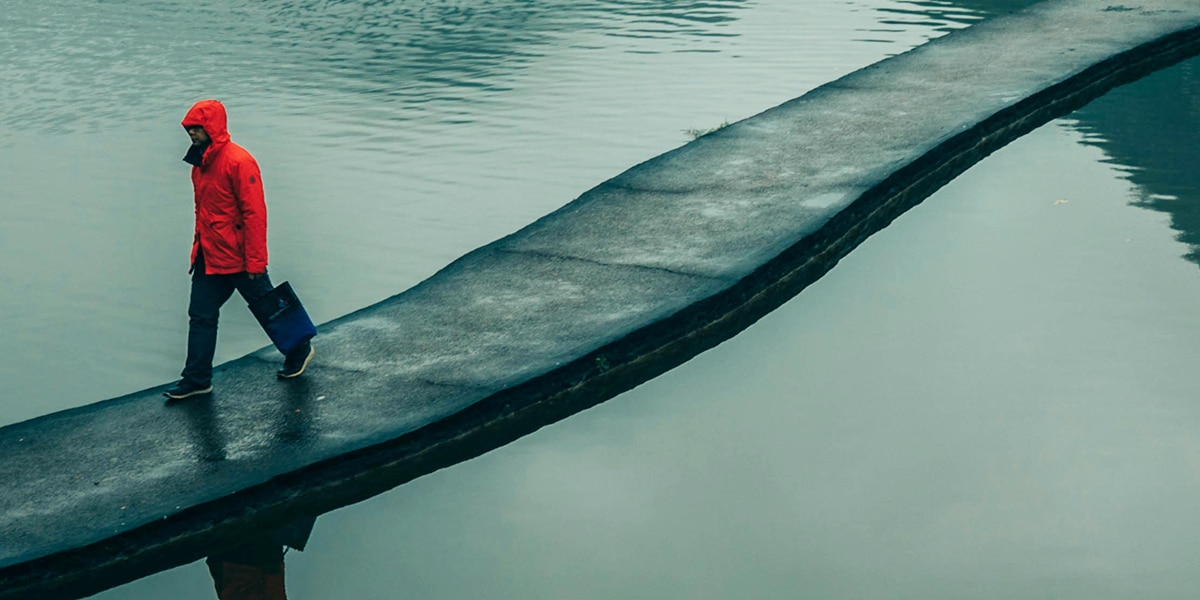Sitting, standing, and kneeling during Mass each have their own distinct role in helping us fully experience and appreciate the liturgy.
Recently, a non-Catholic friend accompanied me to Mass. “I was so confused!” she exclaimed afterward. “How do you know when to sit or stand or kneel? And all those secret gestures!”
For most Catholics, that knowledge has been developed by participation in many Masses over the years. It’s so ingrained that even if we’re not paying close attention, the movement of the assembly gives us a split-second clue. We automatically change positions as our muscle memory takes over—so much so that if someone seated close to us sits or stands at the wrong time, many of us automatically follow along!
“But what does it all mean?” she continued. “Why not just sit, like we do at our church services?”
What a great question. We Catholics pray with our hearts, minds, and bodies. During a typical Mass, we sit four times (five if you count sitting when we first come into the Church), stand six times, and kneel three times. The word liturgy means “work of the people.” It’s not just the priest who does all the work; we have responsibilities too. The motions and postures we use have meaning and subtly change our mindset throughout each part of the Mass. We know that “body language” can sometimes convey our feelings better than words. What are we saying with our postures at Mass?
Sitting: A Time to Listen
As they continued their journey, he entered a village where a woman whose name was Martha welcomed him. She had a sister named Mary [who] sat beside the Lord at his feet listening to him speak. Martha, burdened with much serving, came to him and said, “Lord, do you not care that my sister has left me by myself to do the serving? Tell her to help me.” The Lord said to her in reply, “Martha, Martha, you are anxious and worried about many things. There is need of only one thing. Mary has chosen the better part and it will not be taken from her” (Lk 10:38–42).
Sitting is the posture we use to listen and learn and the position we take when we come into the church for Mass. We get comfortable, quiet our thoughts, and prepare to absorb what we’ll hear. We give ourselves time to clear our heads of distractions, and like Martha’s sister, Mary, we put aside our schedules and to-do lists so we can listen to the Lord.
Sitting is an informal posture, and when we say, “Let’s have a quick sit-down,” we mean to have an easygoing discussion. So, as we sit for the readings and the homily, we are attentive to what God wants to share.
We also sit for the presentation and preparation of the gifts and briefly before the dismissal. In each case, we listen and reflect, like 12-year-old Jesus in the synagogue and students in any classroom.
After three days they found him in the temple, sitting in the midst of the teachers, listening to them and asking them questions, and all who heard him were astounded at his understanding and his answers (Lk 2:46–47).
Kneeling: A Time for Reverence
For it is written, “As I live, says the Lord, every knee shall bend before me, and every tongue shall give praise to God” (Rom 14:11).
Kneeling is a posture of devotion and adoration; imagine a young man proposing to his bride. It’s a posture of humility, as Jesus demonstrated when he knelt and washed the apostles’ feet. The knee is a symbol of power, so to bend it is to bend our strength in submission. Kneeling brings us down to a child’s level and makes us small and vulnerable. Even animals bend down low to defer to others, as in the case of a dog when it meets a new friend or a chimp that reduces its height to show submissiveness.
As Jesus prayed in the Garden of Gethsemane and submitted to his father’s will, he knelt: After withdrawing about a stone’s throw from them and kneeling, he prayed (Lk 22:41). That prayer in the garden was not only one of submission but one of worship. The same is true for us. As we kneel and submit to God’s will, we recognize his power and glory. We worship him.
Considering all this, it’s clear that we kneel at Mass when Jesus is most profoundly present: during the Eucharistic prayer as the bread and wine become Christ’s body and blood, before we receive the Eucharist as we invite God to come into our hearts, and after Communion to thank him for the gift of the Eucharist we just received.
Because of this, God greatly exalted him and bestowed on him the name that is above every name, that at the name of Jesus every knee should bend, of those in heaven and on earth and under the earth, and every tongue confess that Jesus Christ is Lord, to the glory of God the Father (Phil 2:9–11).
Standing: A Time for Readiness
So stand fast with your loins girded in truth, clothed with righteousness as a breastplate, and your feet shod in readiness for the gospel of peace (Eph 6:14–15).
Standing is a posture of respect and readiness. We stand when someone we love enters the room. We stand to bestow honor as a dignitary arrives or a judge enters a courtroom. Soldiers stand at attention when an officer comes into their presence, alert and ready to follow commands. At the first Passover, the Israelites were told to eat their meal standing, with staff in hand, prepared for the coming of the Lord.
Similarly, our standing at the beginning of Mass is in honor of God’s presence and in anticipation of the events we know will follow. We stand during the Gospel out of respect for the words we hear about Jesus. We stand for most of the prayers the assembly recites aloud together: the creed, the prayer of the faithful, the Lord’s Prayer, and when we greet each other in the sign of peace. Finally, we stand at the dismissal to reflect our readiness and urgency as we head out into the world on the mission for which God has called us.
Therefore, my beloved brothers, be firm, steadfast, always fully devoted to the work of the Lord, knowing that in the Lord your labor is not in vain (1 Cor 15:58).
Give it a Try
Try this experiment to demonstrate.
First, sit in a comfortable place with both feet flat on the floor, your back supported by the seat, and your shoulders relaxed. Concentrate for a few seconds on the sights and sounds around you. Do you notice anything new or unusual? This is a relaxed position for most of us, one we can maintain without much thought, making it easier to concentrate on our prayer.
Now stand up. Balance your weight evenly on both feet. Your body knows something is happening—it is automatically alert and attentive. Your pupils dilate to see more. Your skin temperature increases slightly. Heart rate and breathing typically also increase. Do you feel the change? This is a position of strength, power, and preparation. Often when we stand, we are preparing to do something else, like reach for an object or move to another place.
Finally, kneel down. You can keep your torso erect, rest your buttocks on your heels, or lower your head to the floor (the “child’s pose”). You are now small and vulnerable; it’s hard not to feel humble when you are low to the ground. This is a difficult posture as most people’s knees don’t allow them to stay in it for very long. It can be painful, and it takes physical and mental effort to stay kneeling. We must consciously choose to submit to the awkward and humble position.
Private Prayer
So far, we’ve addressed postures at Mass. But what about private prayer? Does our posture matter when we are praying alone?
Yes, it does. Just like at Mass, our prayer should involve our entire bodies, albeit at different times and for different reasons. Think about how you felt in the exercise above. Multiple studies have shown that position and posture affect our emotions and vice versa. How we position ourselves in prayer affects how we feel about God and ourselves.
Sitting is appropriate for reading Scripture or writing in your prayer journal. These are times when we are learning and thinking. We sit comfortably so we are not distracted by our aches and pains. It’s a position of reflection as we open ourselves to God, and he shares himself with us.
Standing is practically an automatic response when we find ourselves in awe of God’s majesty. Imagine the wonder of standing on a sunset-drenched beach, under a crystal-clear starry night sky, or at a mountain peak overlooking the valley below. Or consider how we jump to our feet when our team scores, jubilant with praise and enthusiasm. So it is with our standing prayer, as excitement and respect compel us to move.
And when we throw ourselves at God’s mercy, beg him for some need, or are profoundly grateful, we kneel. We submit our will to God and admit our frailty and weakness before him. Try to remember the last time you knelt other than at church. Although some of us still kneel at the side of the bed before we sleep each night, for most of us, it’s not a position we choose very often.
The Meaning Behind Our Gestures
“And what about all those other little gestures and actions?” my friend asked. Gestures are an essential part of our Catholic life. They have rich meanings. Here are a few of our common gestures and a reminder about what they represent.
When we come into a church, we make the sign of the cross with the holy water we find near the entrance. The cross reminds us of the Trinity, and the water reminds us of our Baptism in Christ. Some churches use small wells attached next to the doors, but some use the baptismal font itself.
As we reach our desired pew or row, we genuflect, kneeling briefly on one knee. This symbolism goes back to medieval days when commoners genuflected on their left knee in front of kings and nobles. Christians gradually absorbed the practice to honor our almighty King, using the right knee to distinguish it from secular action.
Before the Gospel is read, we use one of our thumbs to make the sign of the cross on our forehead, lips, and heart. We are praying, “May the word of the Lord be on my mind, on my lips, and in my heart.” The priest pronounces similar words over the deacon as he sends him to proclaim the Gospel or to himself as he stands at the lectern about to read.
We also place our hands in different ways at different times. We keep them folded or tented in prayer position for most of the Mass. We shake hands with our neighbors during the sign of peace to ask for their blessing and provide them with ours. During the Lord’s Prayer, many people use the orans position—hands open and extended with palms up, imitating Jesus’ hands on the cross. The position can represent begging—as in “Please, Lord, help us,” or openness to receive God’s love.
We perform a profound bend-from-the-waist bow when we recite the words, “and by the Holy Spirit was incarnate of the Virgin Mary and became man,” during the profession of faith. This bow honors the sacred mystery of the Incarnation, one of the basic tenets of the Christian faith. We perform this same deep bow when we pass the tabernacle or stand before the Eucharistic minister to receive holy Communion. We perform a smaller, simpler head bow when we say the name of Jesus. Many people also bow their heads when saying the names of the Trinity, Mary, or the saints.
In his book God Is Near Us: The Eucharist, the Heart of Life, Cardinal Joseph Ratzinger (Pope Benedict XVI) wrote: “Our religion, our prayer, demands bodily expression. Because the Lord, the risen one, gives himself in the body, we have to respond in soul and body . . . the spiritual possibilities of our body are necessarily included in celebrating the Eucharist: singing, speaking, keeping silence, sitting, standing, kneeling.”
What an excellent answer to why we Catholics sit and kneel and stand at Mass. God came to us in the soul and body of Jesus Christ, so we come to God at Mass with our own bodies and souls. Too often, it’s something we do without thinking about it. This week, let’s pay attention to all those bodily movements and remember what we are saying to God with them.









3 thoughts on “Postures of Prayer ”
Oh! Lord, our God, please teach us how to put our faith in the constancy of Your Word by acting in obedience to Your Holy Will, so that we don’t act out of dry bones of human reason alone; to have impact on the people around us, and not giving in to temptation. In Jesus’ name we ask, Whose Spirit makes us ever praise One God, the King of all the world. AMEN.
Last year our pastor told the entirety of the congregation that we should stand right before the communion line begins and for all to remain standing until the last person receives communion. Once the last person has received communion, we may then kneel for 1 – 2 minutes of prayer. The idea is that standing shows unity as all partake in communion. Unfortunately the effect has been that 1/3 to 1/2 of the people stand for the duration of communion and the rest of the congregation kneels. The congregation is a mess with people both standing and kneeling and it is far from unified. I venture to guess that the majority of my fellow parishioners grew up believing we are being most reverent to our Savior by kneeling before Him and do not feel comfortable making that change. I am sure Father had the best intentions but I wish he never suggested this postural change.
After receiving the Eucharist, it is imperative I acknowkedge Christ’s presence, and offer prayers, thanksgiving. I was taught that after receiving communion Christ is present at least 15 minutes in a special way and one needs to spend time with him. I attempt to avoid any distraction that would keep me from honoring Christ and adoring Him on the Eucharist.